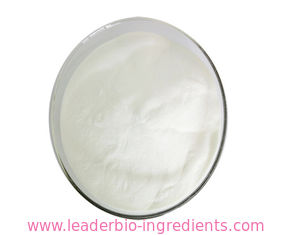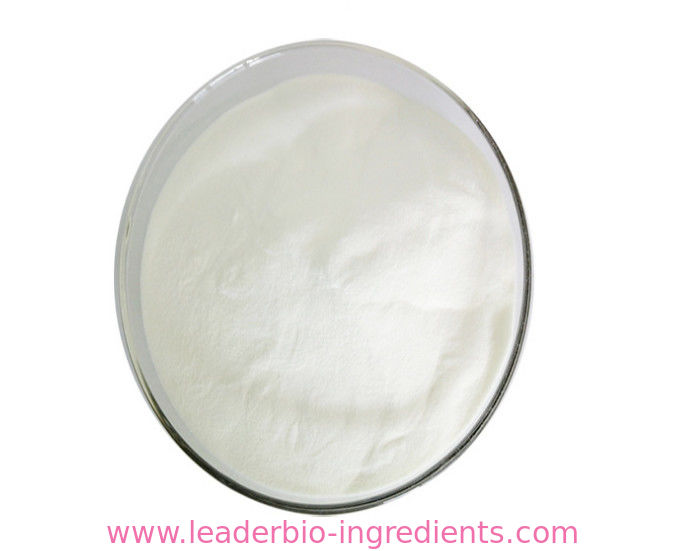| Potassium Bitartrate Basic information |
| Product Name: | Potassium Bitartrate |
| Synonyms: | Potassium Bitartrate, powder;L-(+)-Tartaric acid monopotassium salt, Potassium hydrogen L-tartrate;L(+)-Tartaric acid monopotassium salt, Potassium L-tartrate monobasic, Potassium bitartrate, Potassium hydrogen L-tartrate, Tartaric acid monopotassium salt;L(+)-Potassium hydrogen tartrate,99%;Potassium hydrogen L-tartrate Tartaric acid monopotassium salt;L(+)-Potassium hydro;Radix Notoginseng P.E.;PotassiuM Bitartrate (AS) |
| CAS: | 868-14-4 |
| MF: | C4H5KO6 |
| MW: | 188.18 |
| EINECS: | 212-769-1 |
| Product Categories: | Food additive and acidulant |
| Mol File: | 868-14-4.mol |
| Potassium Bitartrate Chemical Properties |
| Melting point | 267°C (dec.) |
| alpha | 32.5 º (c=10, 1N NaOH) |
| density | 1.954 g/mL at 25 °C(lit.) |
| Fp | 210℃ |
| storage temp. | Store at +15°C to +25°C. |
| solubility | 5.7g/l |
| form | Crystals or Powder |
| color | Colorless opaque or white |
| Specific Gravity | 1.954 |
| Odor | Odorless |
| PH | 3.4-3.7 (H2O, 20℃)(saturated solution) |
| PH Range | 3.4 - 3.7 at 20 °C |
| optical activity | [α]20/D +8.0 to +9.2° |
| Water Solubility | Soluble in water and dilute mineral acid. Insoluble in alcohol. |
| Merck | 14,7615 |
| BRN | 6119985 |
| Stability: | Stable. Incompatible with strong oxidizing agents. |
| CAS DataBase Reference | 868-14-4(CAS DataBase Reference) |
| EPA Substance Registry System | Potassium bitartrate (868-14-4) |
| Safety Information |
| Safety Statements | 24/25 |
| WGK Germany | 1 |
| RTECS | WW8223000 |
| TSCA | Yes |
| HS Code | 29181300 |
| Hazardous Substances Data | 868-14-4(Hazardous Substances Data) |
| MSDS Information |
| Provider | Language |
|---|---|
| L(+)-Potassium hydrogen tartrate | English |
| Potassium Bitartrate Usage And Synthesis |
| Description | L (+)-Potassium hydrogen tartrate (also known as potassium bitartrate) is the potassiumacid salt of tartaric acid (a carboxylic acid). It is the byproduct during the winemaking process. It can be used in baking or as a cleaning solution. When mixed with an acidic liquid such as lemon juice or white vinegar, it can be made of a paste-like cleaning agent for metals or some other cleaning applications. It can also be used as a pH buffer component in chemistry. It has been recently shown that it is capable of treating breast cancer. Approved by the FDA as a direct food substance, potassium bitartrate is used as an additive, stabilizer, pH control agent, antimicrobial agent, processing aid, or thickener in various food products. Potassium bitartrate has a long history of medical use as a laxative administered as a rectal suppository and is an approved third-class OTC drug in Japan. Potassium bitartrate was one of active ingredients in Phexxi, a non-hormonal contraceptive agent that was approved by the FDA on May 2020. |
| Chemical Properties | Potassium Bitartrate, or tartar, is a salt produced from the crystalsfound on the sides of wine casks. When purified it is known as cream oftartar. It is acid, and is slightly soluble in water.It is used in baking powder, for medicine, and as an acid and buffer in foods. |
| Chemical Properties | Potassium bitartrate, also known as potassium hydrogen tartrate, has formula KC4H5O6, is a byproduct of winemaking. In cooking it is known as cream of tartar. It is the potassium acid salt of tartaric acid, a carboxylic acid. |
| Occurrence | Potassium bitartrate crystallizes in wine casks during the fermentation of grape juice, and can precipitate out of wine in bottles.The crystals (wine diamonds) will often form on the underside of a cork in wine-filled bottles that have been stored at temperatures below 10°C , and will seldom, if ever, dissolve naturally into the wine. These crystals also precipitate out of fresh grape juice that has been chilled or allowed to stand for some time. To prevent crystals forming in homemade grape jam or jelly, fresh grape juice should be chilled overnight to promote crystallisation. The potassium bitartrate crystals are removed by filtering through two layers of cheesecloth. The filtered juice may then be made into jam or jelly. In some cases they adhere to the side of the chilled container, making filtering unnecessary. The crude form (known as beeswing) is collected and purified to produce the white, odorless, acidic powder used for many culinary and other household purposes. |
| Uses | Largely in baking powders; coloring metals, galvanic tinning of metals; reducer of CrO3 in mordants for wool. |
| Application | In food In food, potassium bitartrate is used for: Stabilizing egg whites, increasing their heat tolerance and volume Stabilizing whipped cream, maintaining its texture and volume Preventing sugar syrups from crystallising Reducing discolouration of boiled vegetables Thickening Tartar sauce Additionally it is used as a component of: Baking powder, as an acid ingredient to activate baking soda Sodium-free salt substitutes, in combination with potassium chloride A similar acid salt, sodium acid pyrophosphate, can be confused with cream of tartar because of their common function as a component of baking powder. House hold use Potassium bitartrate can be mixed with an acidic liquid such as lemon juice or white vinegar to make a paste - like cleaning agent for metals such as brass, aluminum or copper, or with water for other cleaning applications such as removing light stains from porcelain. This mixture is sometimes mistakenly made with vinegar and sodium bicarbonate (baking soda), which actually react to neutralise each other, creating carbon dioxide and a sodium acetate solution. Cream of tartar was often used in traditional dyeing where the complexing action of the tartrate ions were used to adjust the solubility and hydrolysis of mordant salts such as tin chloride and alum. Cream of tartar, when mixed into a paste with hydrogen peroxide, can be used to clean rust from some hand tools, notably hand files. The paste is applied and allowed to set for a few hours and then washed off with a baking soda/water solution. Chemistry Potassium acid tartrate, also known as potassium hydrogen tartrate, is, according to NIST, used as a primary reference standard for a pH buffer. . |
| Preparation | potassium bitartrate is mainly produced from the mother liquor of Seignette's salt. These decolorized, purified, and filtered solutions are acidified to pH 3.5 with hydrochloric or sulfuric acid. Since cream of tartar is sparingly soluble, it precipitates and is recovered by centrifugation, dried, and ground before being packaged as fine powder. |
| Purification Methods | It crystallises from water (17mL/g) between 100o and 0o. Dry it at 110o. [Beilstein 3 IV 1222.] |
| References | Coulter, A. D, et al. "Potassium bitartrate crystallisation in wine and its inhibition." Australian Journal of Grape & Wine Research 21.S1(2016):627-641. Berg, H. W, and M. Akiyoshi. "Utility of potassium bitartrate concentration-product values in wine processing." Amer J Enol Vitic (1971). Cremer, G. A., and R. Boulton. "The hydrolysis of gelatin by an immobilized acid protease. I. Immobilization and hydrolysis kinetics. " American Journal of Enology & Viticulture 1(1981):14-17. Dr, María J. Vicent, et al. "The Therapeutic Action of Potassium Bitartrate." Angewandte Chemie 44.26(2005):4061-6. |
| Potassium Bitartrate Preparation Products And Raw materials |
| Raw materials | Potassium carbonate-->Potassium hydroxide-->Hydrogen peroxide-->Maleic anhydride-->Hydrogen Sulfide-->D(-)-Tartaric acid-->DL-Tartaric acid-->Disodium 2-naphthol-3,6-disulfonate-->Potassium tartrate-->sulphuric acid, potassium salt |
| Preparation Products | POTASSIUM ANTIMONY TARTRATE |

